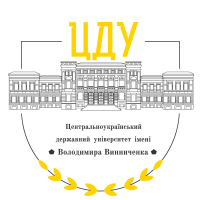ONOMATOPOEIA IN THE O. PROSSLER’S WORKS AND ITS TRANSLATION INTO UKRAINIAN
DOI:
https://doi.org/10.32782/2522-4077-2024-208-32Keywords:
onomatopoeia, onomatopoeia, sound imitation, translation, fairy tale storyAbstract
The article deals with onomatopoeia in O. Proisler’s works “Die kleine Hexe” (“The Little Witch”), “Das kleine Gespenst” (“The Little Ghost”) and “Der kleine Wassermann” (“The Little Water Sprite”) and its translation into Ukrainian. The research proves that sound imitations are units of language and use the sound composition of the language, so they cannot be completely identical to natural sounds. Each language deals with the sounds of the outside world in its own way, in accordance with the peculiarities of its phonetic system. Therefore, the sound imitations of different languages do not coincide. At the same time, the sound imitations of different languages have similarities, because they are based on the same sounds. The lexicon of sound imitation, being one of the strongest expressive linguistic means, is very often used in fiction texts. Thus, every translator working with such texts has to solve the problems of their translation. The research found that onomatopoeia includes not only the sounds made by animals, objects, or nature (hatzi, bum, blubb-blubb, bul-bul), but also the vocabulary associated with these sound sources – sneeze, click, gurgle, squeak, roar. Unlike interjections, onomatopoeia does not express any feelings or will. Sound-reproducing words are one of the expressive and pictorial means of reflecting reality. The article shows that sound imitation vocabulary in general, being one of the most powerful expressive linguistic means, is often used in literary texts. The research established that some onomatopoeic words are traditional forms of conveying certain sounds (bums – bum ‘the sound of a blow, knock’, wuff – hav-hav ‘the sound of a dog barking’), while others are created by the author for a specific case (Rumpumpel – Tram-Bam-Bach, Uhu Schuhu – Uhu Shuhu). The onomatopoeia words found in O. Proisler’s works are divided into 4 types: 1) artifactophonic; 2) anthropophonic; 3) zoophonic; 4) naturophonic. Onomatopoeia can be used as a derivational base for verbs and nouns: Blubb-blubb – blubbern, blubberte, Luftblase – bul-bul, bulkaty, bulkotity, bulbashka; Klipp-klapp – klappern – lop-lop – zalopotilo. Sound imitations can be used in a literary text to indirectly characterise a character and his/her emotional state in a particular situation or to create a certain atmosphere. When translating, V. T. Vasylyuk chose linguistic units familiar to Ukrainian readers, which contributes to the domestication of the work.
References
Валігура О. Р., Охріменко В. О. Специфіка сучасних досліджень ономатопеїчної лексики. Записки з ономастики. 2019. Вип. 22. С. 31–43.
Гаценко І. О. Ономатопея як репрезентація звукосфери в мові. Наукові записки Вінницького державного педагогічного університету ім. М. Коцюбинського. Серія: Філологія (мовознавство). 2013. Вип. 17. С. 256–261.
Гаценко І. О. Функціональний аналіз семантичної структури звукозображальної лексики. Наукові записки. Острог : Вид-во нац. ун-ту «Острозька академія». Серія «Філологічна», 2013. Вип. 39. С. 13–14.
Кушнерик В. І. Аналіз фоносемантичних явищ у мовних одиницях різносистемних мов. Теоретична і дидактична філологія : збірн. наук. праць. Переяслав-Хмельницький ; Кременчук : Видавець ПП Щербатих О. В., 2017. Вип. 25. Серія «Філологія, Педагогіка». С. 198–204.
Кушнерик В. І. Фоносемантизм : гіпотези і факти. Чернівці : Книги – ХХІ, 2008. 420 с.
Кушнерик В., Савчук Т. Фоносемантичні явища як мовні реалії. Науковий вісник Чернівецького національного університету ім. Ю. Федьковича. 2021. Вип. 831–832. Германська філологія. С. 166–174.
Лєпухова Н. І. Переклад літературної казки як інтерпретація казкового світу автора. Гуманітарна освіта в технічних вищих навчальних закладах. Київ, 2013. № 27. С. 133–142.
Лєпухова Н. Проблема дефініції, домінантні ознаки та труднощі перекладу літературної казки. Мовні і концептуальні картини світу. 2013. № 46 (2). С. 352–360.
Літературознавчий словник-довідник / за ред. Р. Т. Гром’яка, Ю. І. Коваліва, В. І. Теремка. Київ : ВЦ «Академія», 2007. С. 508.
Малинюк І. В. Типологія звукозображальних слів у китайській та українській мовах. Автореф. дис. … канд. філол. наук : 10.02.17. Київ, 2021. 23 с.
Мельничук Р. І. Фоносемантичні явища у сучасній німецькій мові (теоретико-експериментальне дослідження). Автореф. дис. … канд. філол. наук: 10.02.04. Запоріжжя, 2017. 21 с.
Мельничук Р. І. Функціонування звукозображувальної системи у звуконаслідувальній і звукосимволічній лексиці сучасної німецької мови. Мови професійної комунікації: лінгвокультурний, когнітивно-дискурсивний, перекладознавчий та методичний аспекти : матеріали ІІ-ї Міжнар. наук.-практ. конф. (16 квітня 2015 р.). НТУУ «КПІ». Київ. С. 85–87.
Найдеш О. В. Об’єктивний звукосимволізм фонестемної лексики німецької мови. Науковий вісник Чернів. ун-ту: зб. наук. праць. Чернівці : Рута, 2009. Вип. 431. С. 94–111.
Павлик Н. В. Звукова організація тексту як спосіб емоційного впливу в художньому дискурсі. Науковий вісник Міжнародного гуманітарного університету. Сер.: Філологія. 2022. № 53. Том 1. С. 136–139.
Пройслер О. Водяничок : Казки / Перекл. з нім. і передм. В. Т. Василюка. Київ : Веселка, 1992. 284 с.
Ребрій О. В. Сучасні концепції творчості у перекладі. Харків : ХНУ імені В. Н. Каразіна, 2012. 376 с.
Якимчук А. П. Лінгвокультурна комунікація як випробовування для перекладача. Вісник Житомирського державного університету ім. Івана Франка. 2007. № 34. С. 217–221.
Preußler O. Das kleine Gespenst. URL: https://www.kostenlosonlinelesen.net/kostenlose-das-kleinegespenst/lesen/7 (дата звернення 04.10.2023)
Preußler O. Die Kleine Hexe. URL: https://www.rulit.me/books/die-kleine-hexe-download-304608.html (дата звернення 06.10.2023)
Preußler O. Der kleine Wassermann. URL: https://www.kostenlosonlinelesen.net/kostenlose-derkleine-wassermann (дата звернення 08.10.2023)








